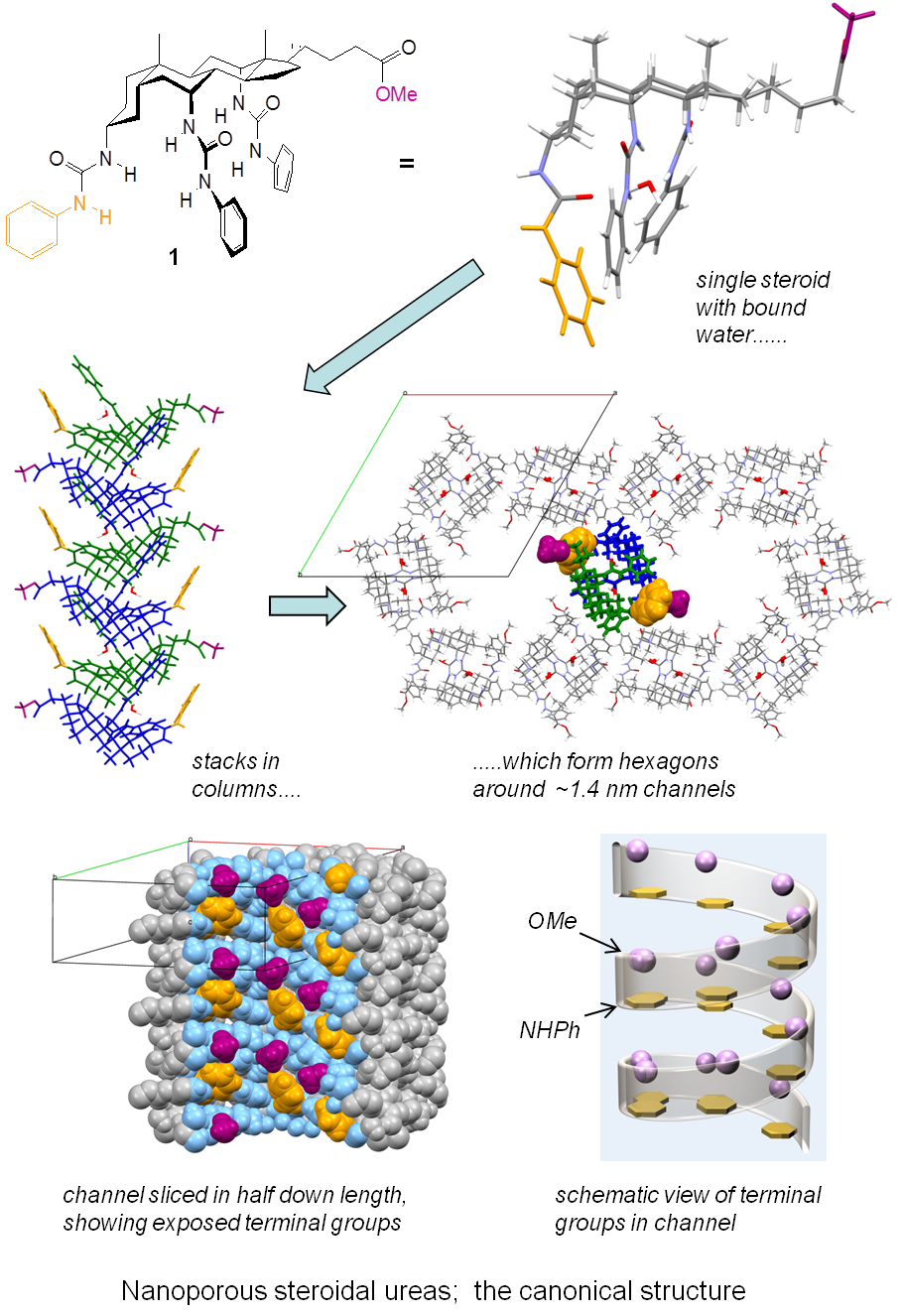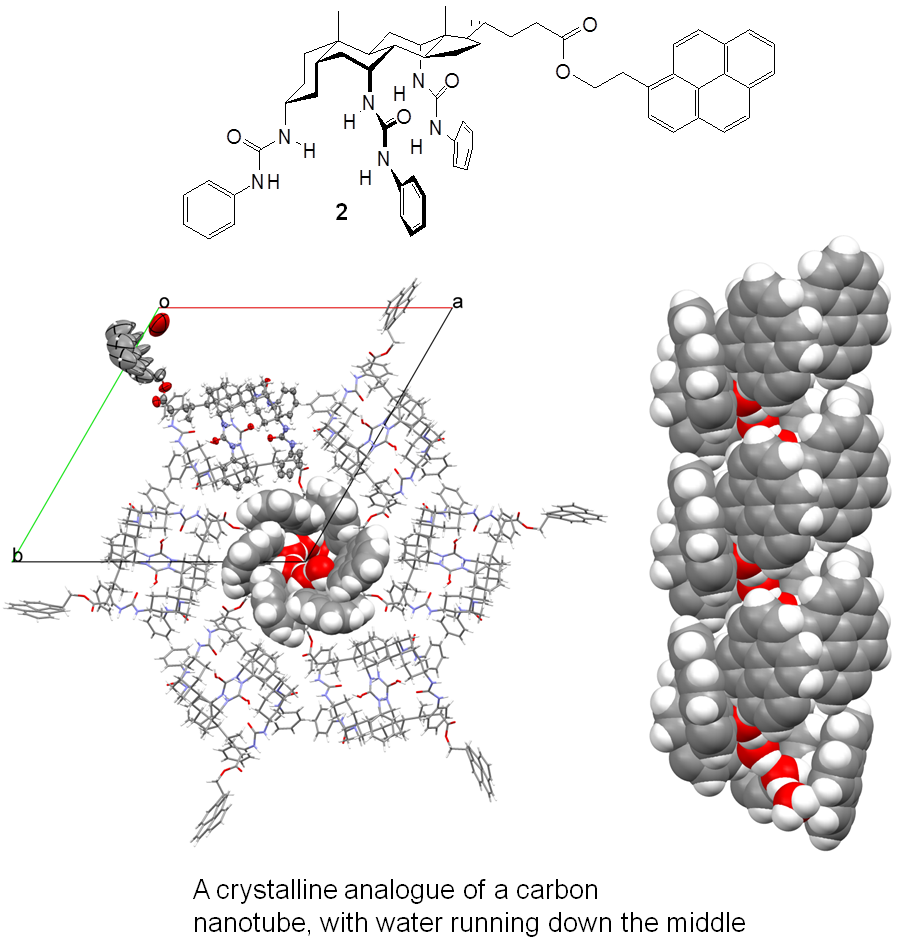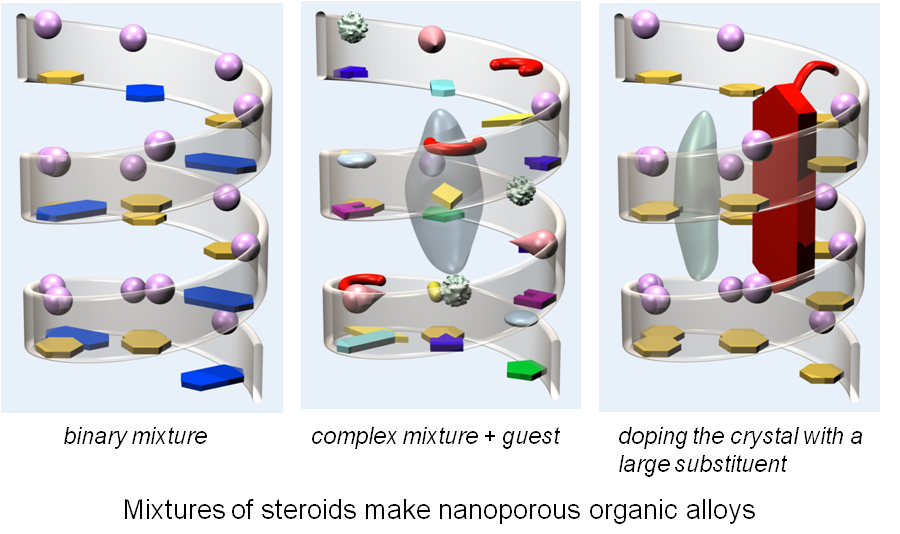The design of crystals with predictable packing arrangements and properties is a major challenge for supramolecular chemistry. We entered this area by accident, through our work on steroid-based anion receptors/transporters. We transformed cholic acid into a number of bis-phenylureas and found that some of them, for example 1, formed needle-like crystals. When we determined the crystal structures we found that the packings were almost identical, and quite remarkable. The molecules accept a water molecule into their polar binding site, then stack into columns in which successive steroids point in alternating directions. The columns pack in a hexagonal arrangment which leaves broad solvent-filled pores, ~1.4 nm in diameter. From the viewpoint of the channel interior, the steroids form spiral sequences which run down the length of the pores. Interestingly, the groups at either end of the steroid (in 1, the methoxy and NHPh) are directed into the pores, forming part of the walls. This explains why many variants can adopt the same arrangement – altering the terminal group does not, in general, cause problems for the crystal packing.

These nanoporous steroidal ureas (NPSUs) are unusual from several points of view. Firstly the pores are exceptionally wide for purely organic crystals and are capable of accepting some quite large organic molecular guests. Secondly the pores can be tuned in size and nature simply by varying the terminal groups. In one example, a pyrene unit was attached to one end of the steroid to give 2. Unsurprisingly this gave crystals with much narrower pores. Less expected was the arrangement of pyrenes, which created an interior quite like that of a carbon nanotube, and the fact that a string of H-bonded water molecules was found in this hydrophobic environment.

Thirdly, different NPSUs can be co-crystallised to create organic alloys, allowing a further level of tuning. For example, binary mixtures could be used to adjust physical (e.g. optical) properties, and multicomponent mixtures could form complex binding sites for guests. Also, quite large and sophisticated units can be placed in the channels through attachment to a steroidal terminus, then doping the resulting derivative at low loadings in a simpler host.

We believe that NPSUs provide an unusual platform for the development of functional crystalline materials, with potential applications in medicine, information technology, and chemical technology. Current research is exploring some of these possibilities.
For more details, see:
- A. L. Sisson, V. del Amo Sanchez, G. Magro, A. M. E. Griffin, S. Shah, J. P. H. Charmant, A. P. Davis, Angew. Chem. Int. Ed. 2005, 44, 6878.
- R. Natarajan, J. P. H. Charmant, A. G. Orpen, A. P. Davis, Angew. Chem. Int. Ed. 2010, 49, 5125.
- R. Natarajan, G. Magro, L. N. Bridgland, A. Sirikulkajorn, S. Narayanan, L. E. Ryan, M. F. Haddow, A. G. Orpen, J. P. H. Charmant, A. J. Hudson, A. P. Davis, Angew. Chem. Int. Ed. 2011, 50, 11386. (Highlight: M. Mastalerz, Angew. Chem. Int. Ed. 2012, 51, 584.)